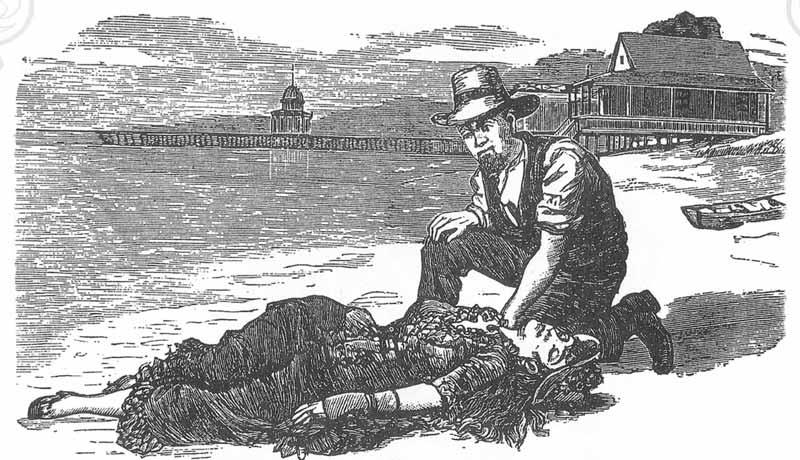By Dan Shine
Voice Columnist

The Malley Murder
Part I
For years there have been sightings reported of the ghostly image of a young woman in a Victorian style white dress, who has been seen walking on the beach near Savin Rock’s Old Grove…
In 1881, most West Haveners made their living from farming, shipbuilding, fishing, or working at the two local buckle factories. This was during a period when streetlights and indoor illumination were just turning to gas power, telephones and electricity were still somewhere off in the future, and public water had just recently been introduced to the little community. And for most, travel was done by use of the New Haven and West Haven Horse Railroad or by foot, as horses and carriages were only within the reach of the well-to-do.
Then as now, the area surrounding Savin Rock was a busy place during the warmer months—for in those days, the Savin Rock amusement area was experiencing a period of rapid growth. People came to The Rock from neighboring communities, and even surrounding states, to enjoy the food and fun that had made Savin Rock a well-known summer destination. Some would stay for weeks at a time in The Rock’s fine hotels.
And then as now, from time to time people would tragically turn up dead in the area around The Rock. But one particular tragedy overshadowed all those others, and a legend grew around the Malley Murder case, also known as the Jennie Cramer murder mystery.
What? You never heard of it? Well, the story goes like this:
Just as the sun was rising on a hot Saturday, August 6, 1881 an oysterman named Asahel Curtiss was bailing the water out of his boat before heading out for his day’s catch on Long Island Sound. Suddenly, something caught his eye: he paused from his work at the sight of a white object, which was stuck on a nearby sandbar and was swaying back and forth with the incoming tide. Curtiss waded out through the water to investigate. What he found on the sandbar was the lifeless body of a well-dressed and remarkably pretty young woman.
Curtiss carried the young woman’s body from the water and carefully laid it on the sandy beach. By this time, he had been joined by S.L. Marsden, who had been watching the recovery of the body from his house, and had come to help. Curtiss, who had previously recovered other bodies from the Sound had noticed something strange about this one: the girl’s eyes were closed, not open; her hands were open, not clenched, and when he turned her over, no water came from her mouth. This, plus the fact that she had been lying face down gave Curtiss the idea that perhaps the young woman might not have drowned, but might have died by some other means.
To be continued-